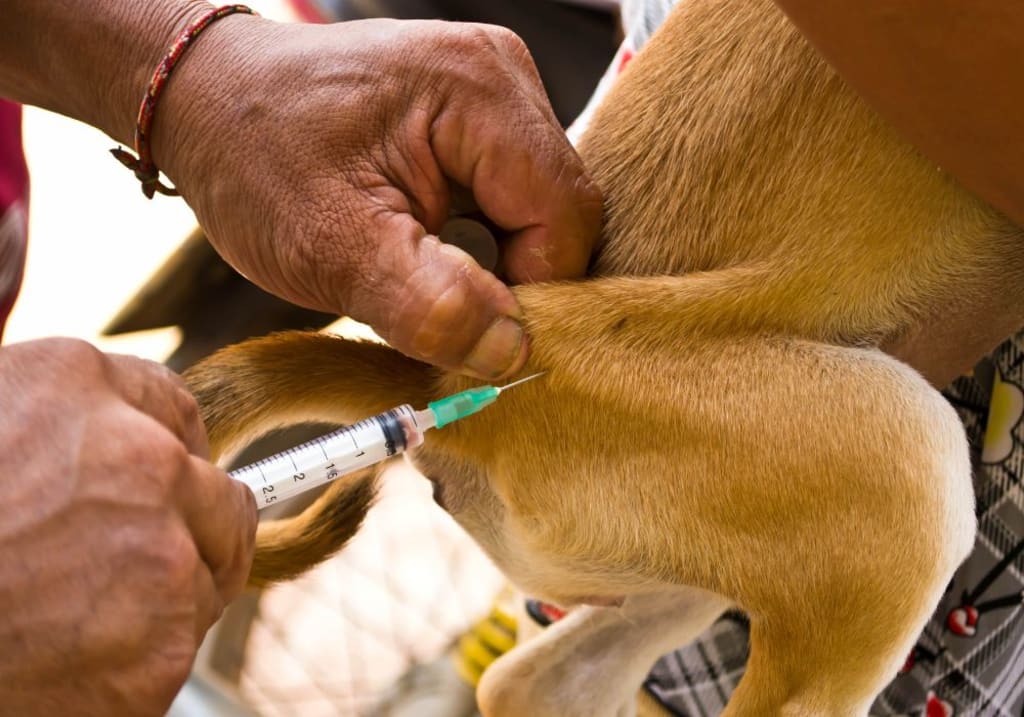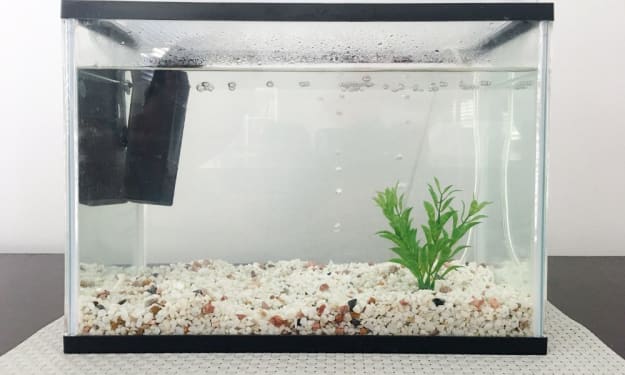Signs of Heatstroke in Dogs and How to Prevent It
A Comprehensive Guide

Understanding Heatstroke in Dogs
Heatstroke is a serious and potentially fatal condition that can affect dogs, especially during hot weather. Unlike humans, dogs do not sweat through their skin to regulate body temperature. Instead, they rely on panting and limited sweating through their paw pads and nose. This makes them more susceptible to overheating and heatstroke. Understanding the signs of heatstroke in dogs and knowing how to prevent it is crucial for every dog owner. This comprehensive guide will provide you with all the information you need to keep your furry friend safe and healthy during warm weather.
What is Heatstroke?
Heatstroke, also known as hyperthermia, occurs when a dog's body temperature rises to dangerous levels, typically above 103°F (39.4°C). If left untreated, heatstroke can lead to severe organ damage and even death. Heatstroke can be caused by a variety of factors, including high ambient temperatures, excessive exercise, and lack of access to water or shade.
Signs of Heatstroke in Dogs
Recognizing the signs of heatstroke in dogs is essential for early intervention and treatment. Here are some common symptoms to watch for:
1. Excessive Panting
Panting is a normal way for dogs to regulate their body temperature, but excessive panting can be a sign of heatstroke. If your dog is panting heavily and rapidly, it may be struggling to cool down.
2. Drooling
Excessive drooling, also known as hypersalivation, is another common sign of heatstroke. If you notice your dog drooling more than usual, it could be an indication that it is overheating.
3. Red or Pale Gums
Healthy gums should be a pink color. If your dog's gums appear red, bright, or pale, it could be a sign of heatstroke. Pale gums can indicate poor circulation or shock.
4. Rapid Heart Rate
A rapid or irregular heart rate is another symptom of heatstroke. You can check your dog's heart rate by placing your hand on its chest or feeling for a pulse on the inside of its thigh.
5. Lethargy or Weakness
If your dog seems unusually tired, weak, or unresponsive, it may be experiencing heatstroke. Lethargy and weakness can indicate that your dog's body is struggling to cope with the heat.
6. Vomiting or Diarrhea
Vomiting and diarrhea are common symptoms of heatstroke in dogs. These symptoms can lead to dehydration, further exacerbating the condition.
7. Confusion or Disorientation
Heatstroke can affect a dog's mental state, leading to confusion, disorientation, or even seizures. If your dog appears dazed or is having trouble walking, it may be suffering from heatstroke.
8. Collapsing or Seizures
In severe cases, heatstroke can cause a dog to collapse or experience seizures. This is a medical emergency and requires immediate veterinary attention.
How to Prevent Heatstroke in Dogs
Preventing heatstroke is much easier than treating it. By taking a few simple precautions, you can help keep your dog safe and cool during hot weather. Here are some tips for preventing heatstroke in dogs:
1. Provide Plenty of Water
Always ensure that your dog has access to fresh, clean water. During hot weather, check your dog's water bowl frequently and refill it as needed. You can also provide additional water sources, such as a pet fountain or extra bowls around the house.
2. Create a Cool Environment
Make sure your dog has access to a cool, shaded area both indoors and outdoors. If your dog spends time outside, provide a shaded spot where it can escape the sun. Indoors, use fans or air conditioning to keep the temperature comfortable.
3. Avoid Peak Heat Hours
Avoid walking or exercising your dog during the hottest parts of the day, typically between 10 a.m. and 4 p.m. Instead, take your dog for walks early in the morning or late in the evening when temperatures are cooler.
4. Never Leave Your Dog in a Parked Car
Never leave your dog in a parked car, even for a short period. The temperature inside a parked car can rise rapidly, leading to heatstroke or even death. If you need to run errands, leave your dog at home in a cool, comfortable environment.
5. Use Cooling Products
There are various cooling products available that can help keep your dog cool, such as cooling mats, vests, and bandanas. These products are designed to absorb and dissipate heat, providing relief for your dog during hot weather.
6. Provide Frozen Treats
Frozen treats can help keep your dog cool and hydrated. You can make your own frozen treats by blending dog-safe ingredients such as yogurt, fruit, and water, and freezing them in ice cube trays or molds.
7. Monitor Exercise
While exercise is important for your dog's health, it's essential to monitor and adjust the intensity during hot weather. Avoid strenuous activities and opt for shorter, more frequent walks or play sessions. Always keep an eye on your dog's behavior and stop if it shows any signs of overheating.
8. Grooming
Regular grooming can help keep your dog cool by removing excess fur and preventing matting. However, avoid shaving your dog's coat too short, as the fur provides some protection against the sun. Instead, opt for a trim and regular brushing to maintain a healthy coat.
First Aid for Heatstroke in Dogs
If you suspect your dog is suffering from heatstroke, it's crucial to act quickly. Here are some steps you can take to provide immediate first aid:
1. Move to a Cool Area
Move your dog to a cool, shaded area immediately. If you're outside, find a shaded spot or bring your dog indoors to an air-conditioned room.
2. Offer Water
Offer your dog small amounts of cool (not cold) water to drink. Avoid giving large quantities at once, as this can cause vomiting. You can also wet your dog's mouth and gums with water.
3. Wet Your Dog Down
Use cool (not cold) water to wet your dog's body. You can use a hose, wet towels, or place your dog in a shallow pool or bathtub. Focus on the head, neck, and chest areas. Avoid using ice-cold water, as this can cause blood vessels to constrict and worsen the situation.
4. Use Fans
Position fans to blow cool air over your dog's body. This can help evaporate the water and lower your dog's body temperature.
5. Monitor Temperature
Use a rectal thermometer to monitor your dog's temperature. Once it reaches 103°F (39.4°C), stop the cooling process to prevent hypothermia. Continue to monitor your dog's temperature and behavior.
6. Seek Veterinary Care
Even if your dog appears to recover, it's essential to seek veterinary care as soon as possible. Heatstroke can cause severe internal damage that may not be immediately apparent. Your veterinarian can assess your dog's condition and provide any necessary treatments.
Long-Term Effects of Heatstroke
Heatstroke can have long-term effects on a dog's health, even if it appears to recover. Severe heatstroke can cause damage to the heart, kidneys, liver, and brain. Dogs that have experienced heatstroke may be more susceptible to future episodes, so it's crucial to take extra precautions to prevent recurrence.
Breeds at Higher Risk
Certain dog breeds are more susceptible to heatstroke due to their physical characteristics. These breeds include:
Brachycephalic Breeds
Breeds with short, flat faces, such as Bulldogs, Pugs, and Boxers, are at higher risk of heatstroke. Their shortened airways make it more difficult for them to pant effectively and regulate their body temperature.
Thick-Coated Breeds
Breeds with thick, heavy coats, such as Huskies, Malamutes, and Saint Bernards, are more prone to overheating. Their dense fur can trap heat and make it difficult for them to cool down.
Older Dogs and Puppies
Older dogs and puppies are more vulnerable to heatstroke due to their reduced ability to regulate body temperature. They may also have underlying health conditions that increase their risk.
Overweight Dogs
Overweight and obese dogs are at higher risk of heatstroke. Excess body fat can insulate and retain heat, making it more difficult for the dog to cool down.
Conclusion
Heatstroke is a serious and potentially life-threatening condition that can affect dogs, especially during hot weather. By understanding the signs of heatstroke and taking proactive steps to prevent it, you can help keep your dog safe and healthy. Always provide plenty of water, create a cool environment, avoid peak heat hours, and never leave your dog in a parked car. If you suspect your dog is suffering from heatstroke, act quickly to provide first aid and seek veterinary care. With the right precautions and care, you can help your furry friend enjoy the summer months safely.
About the Creator
Hasan
Welcome...
In this site of mine you can learn amazing things and many information that you don't know so please subscribe to my site.
Enjoyed the story? Support the Creator.
Subscribe for free to receive all their stories in your feed. You could also pledge your support or give them a one-off tip, letting them know you appreciate their work.






Comments
There are no comments for this story
Be the first to respond and start the conversation.